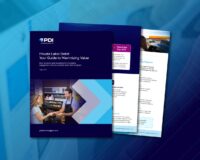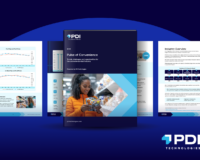
If you’ve been in the commercial fuel industry for any length of time, fluctuations in supply and demand aren’t a new development. However, the scope and frequency of these fluctuations have increased during the last decade.
In just the last few years, we’ve seen how a global pandemic can impact demand almost overnight. We’ve also witnessed how a cyberattack on a key element of the fuel supply chain can disrupt operations in an entire region of the US. In turn, we’ve also seen how quickly demand can spike, such as during the Colonial Pipeline shutdown or as soon as the pandemic lockdowns were lifted.
The main takeaway is that both the demand for fuel and the available fuel supply can fluctuate faster than ever before. Unfortunately, you can’t control these types of macro-economic factors and market disruptions. So, how do you maintain a profitable fuel operation in such a dynamic marketplace?
Your ongoing success depends on being more agile than your competition. When everyone else is scrambling to overcome these market challenges, make sure you focus on the factors that you can control. Your ability to navigate these fluctuations will go a long way in determining whether your business leads or follows.
Optimize Fuel Pricing
In an environment full of variables, one constant you can control is how you price your fuel. Optimizing your fuel pricing process is critical in an industry that’s prone to so many fluctuations—whether they stem from a natural disaster, a cyberattack on the supply chain, or even a labor shortage. By optimizing fuel pricing, you can help ensure your business remains profitable under a wide range of scenarios.
Digital fuel pricing solutions are great for replacing legacy manual processes and eliminating multiple steps to increase both speed and efficiency. For instance, at the start of the pandemic, many operators quickly realized they needed digital tools to centralize supply points and synchronize dispatch teams across multiple locations. The old standard of relying on “gut feelings” and manual processes was no longer viable. That also holds true for pricing.
Modern B2B fuel pricing solutions that leverage Artificial Intelligence (AI) and Machine Learning (ML) make it much easier to have repeatable processes that work across multiple scenarios. In this way, AI, ML, and automation can deliver the on-demand insights you need in the fast-paced world of fuel pricing. These tools can also help you capture and extend deep institutional knowledge—freeing up your experts while making new employees productive much faster.
Protect Margin in Every Transaction
The right fuel pricing solution can help you stay profitable by preventing margin leakage at all points in the supply chain where you buy and sell fuel. The question is, how do you realize margin opportunity throughout the commercial fuel lifecycle?
Depending on the scale of your business and the size of your marketplace, even tiny fractions of pennies can make an enormous impact when you multiply them across the full volume of your business. Although those fractions might initially seem meaningless, they can quickly add up to a huge business opportunity.
By better understanding your entire supply chain, you can more easily determine the best way to maximize your revenue. For example, you can use automation to make real-time pricing decisions that maximize your margins and ensure that your fuel is priced lower than your competitors—but still generating a worthwhile profit.
If you think about the commercial fuel lifecycle, there are all kinds of opportunities for profit. If you’re an International Oil Company (IOC) or state-backed National Oil Company (NOC), you might sell fuel to branded or unbranded dealers, including Company Owned Company Operated (COCO) retail outlets. Or you might also sell into the commercial and industrial markets.
If you’re an independent refiner, you might sell into the general marketplace, which includes distributors, jobbers, traders, and wholesalers. The next step in the lifecycle might be commercial and industrial markets, the commercial aviation market, and a wide range of retail entities.
Accelerate Your Digital Transformation Today
Regardless of where your business operates within the commercial fuel lifecycle, there are multiple points where you buy and sell fuel. Each of those transactions represents a clear opportunity to make money.
But you first need a modern, flexible fuel pricing solution that helps you remain profitable regardless of broader market variables. In an increasingly competitive marketplace, your ability to adapt and innovate with new technologies will help set up your business for continued success no matter what the future holds.



